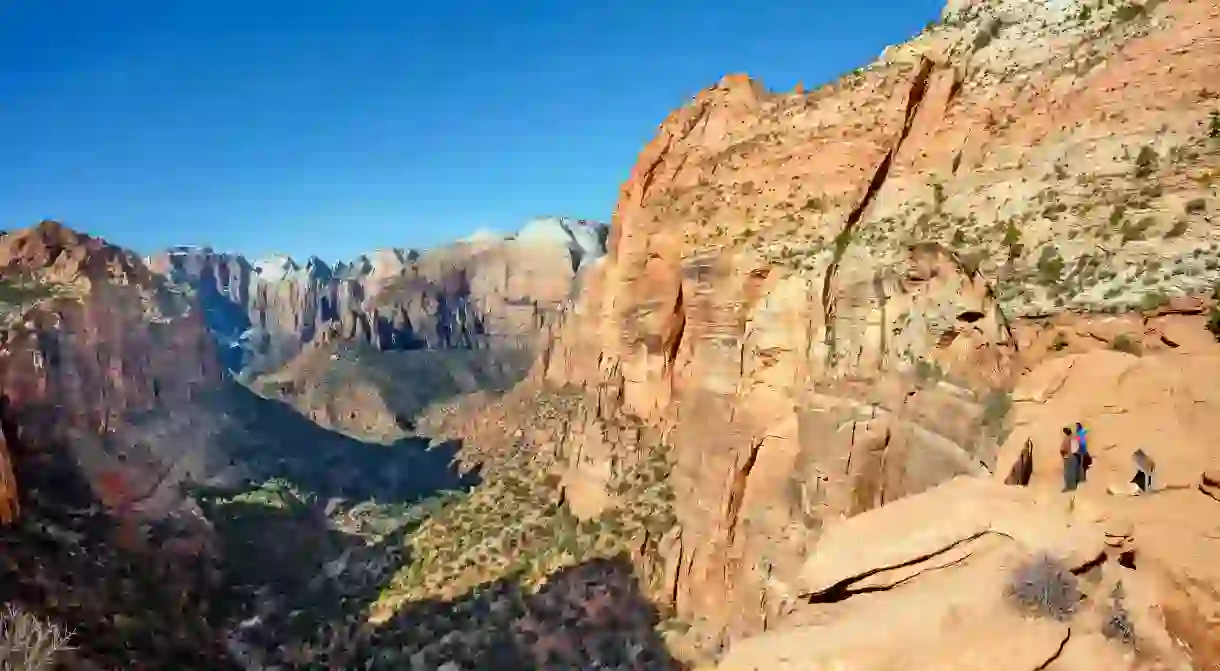7 US National Parks You'll Discover As Michelob ULTRA Pure Gold's new 'CEO'

Calling all nature-loving explorers: Michelob ULTRA Pure Gold is recruiting a new Chief Exploration Officer to live the #vanlife for six months and rediscover America’s stunning national parks.
Is there any natural wonder quite as spectacular as North America’s national parks? Hitting the highway to explore these incredible landscapes sounds like something straight out of a movie – but thanks to Michelob ULTRA Pure Gold and the National Park Foundation, this epic trip can now become a reality.
As CEO, or Chief Exploration Officer, you’ll be paid $50,000 to tour the country in a state-of-the-art van and explore all the natural beauty the US has to offer. From desertscapes in Texas to natural marvels in Arizona, here’s what the new recruit has in store for a trip of a lifetime.
Big Bend, Texas
Big Bend National Park offers something no other park can – the chance to cross the Rio Grande via row boat into Boquillas, in Mexico, which the Texas park borders for 118mi (190km). Here, you’ll find an incredible mix of geological and natural attractions – from the desertscapes of Chihuahua to the forested slopes of the Chisos mountains, via the ghost town of Terlingua and tranquil limestone canyons cut by the bright green ribbon of the Rio Grande. Unsurprisingly, all this varied habitat is home to more than 450 species of birds and 75 species of mammals.

Joshua Tree, California
Named after the jagged, spiky trees that Mormon settlers christened Joshua (after the prophet), this 794,000-acre (320,000ha) park straddles the two desert ecosystems of the Mojave and Colorado. Those trees (actually cacti) will beguile you so much you’ll be seeing them in your sleep, but it’s their setting – in a landscape of massive granite monoliths, palm-studded oases such as Twentynine Palms and stunning rock formations – that will stay with you forever. For an extraspecial memory, take a dusk wander along the Barker Dam Trail and you’ll not only find Native American petroglyphs, but also rare bighorn sheep sipping from the lake.

Yosemite, California
In the crown jewels of national parks, Yosemite, in the Sierra Nevada, is surely the Cullinan diamond, thanks to its combination of plunging waterfalls (seen at their most spectacular in April, May and June), alpine lakes, rolling meadows, roaring rivers and giant sequoia trees. Join the hordes making for El Capitan and along the Mist Trail, but go beyond them to visit the more remote spots, too. Within the park, stretching across 750,000 acres (300,000ha), you can swim in the Merced River, go horseriding in the Tuolumne County Meadows, fish in the high-country lakes or drive up to Glacier Point.

Sequoia, California
With its giant eponymous trees, soaring peaks and rushing rivers through deep canyons, Sequoia is often called Yosemite without the masses, but it also has its own unique features. Here, you’ll find Mount Whitney, at 14,505ft (4,421m) the highest peak in the contiguous US; in the appropriately named Giant Forest is the largest living tree in the world, the Sherman, 275ft (84m) tall and 36ft (11m) in diameter. Just south of it sits Moro Rock, a 6,500ft (1,800m) granite dome that takes 20 minutes to ascend; from the top, you’ll be rewarded with a spectacular view of the Great Western Divide. Meanwhile, limestone caves and waterfalls such as the Tokopah will simply take your breath away.

Saguaro, Arizona
Impress the rangers with the correct pronunciation of the multi-limbed towering saguaro (it’s sa-wah-row) and your knowledge of its unique status (it’s only found in the Sonoran Desert) before heading into the desert forests, which are the highlight of the western park. The best time to come is between April and June when the cacti, reaching up to 50ft (15m), each produce up to a hundred white flowers and often house a family of owls or woodpeckers in their trunk. In the eastern park, the saguaro make way for thickly forested canyons, criss-crossed by a 100mi (160km) network of remote footpaths.

Zion, Utah
Southern Utah’s national parks each has a character and unique features of its own, but the majesty of the richly fertile Zion Canyon, with its multicoloured strata, backed by barren highlands of sun-bleached white sandstone, offers something very different to the out-there weirdness of its neighbours. With elevations varying by up to 5,000ft (1,500m), hikes here are hugely rewarding, with desert flowers and spring blooms providing gorgeous flashes of colour amid the elders, pines and cottonwoods that burst into their own bright range of colours in autumn.

Yellowstone, Idaho, Montana, Wyoming
Many of its 4m annual visitors come to the world’s first national park to experience Old Faithful and the other fumaroles, steaming geysers, hot springs, mudpots and travertine terraces that characterise the park’s 3,500sqmi (9,000sqkm) of wilderness, but don’t forget to explore the dramatic canyons, alpine rivers and lush forests, too, where in quieter spots, such as the remote Lamar Valley in Wyoming, you’ll find hundreds of animal species, including bear, bison, antelope, wolverine, restored grey wolf and the elk that, from September to mid-October, battle each other during mating season.


If you love hiking, outdoor photography and you’re aged 21 years or older, you could become Michelob ULTRA Pure Gold’s new Chief Exploration Officer. To be considered, visit MichelobUltra.com/PureGoldCEO to complete the application form and submit a photo showcasing your nature photography skills by September 30, 2020.
Please drink responsibly.
Find out more about our branded content policy here.
This branded content article was published as part of a commercial campaign that has now ended.













